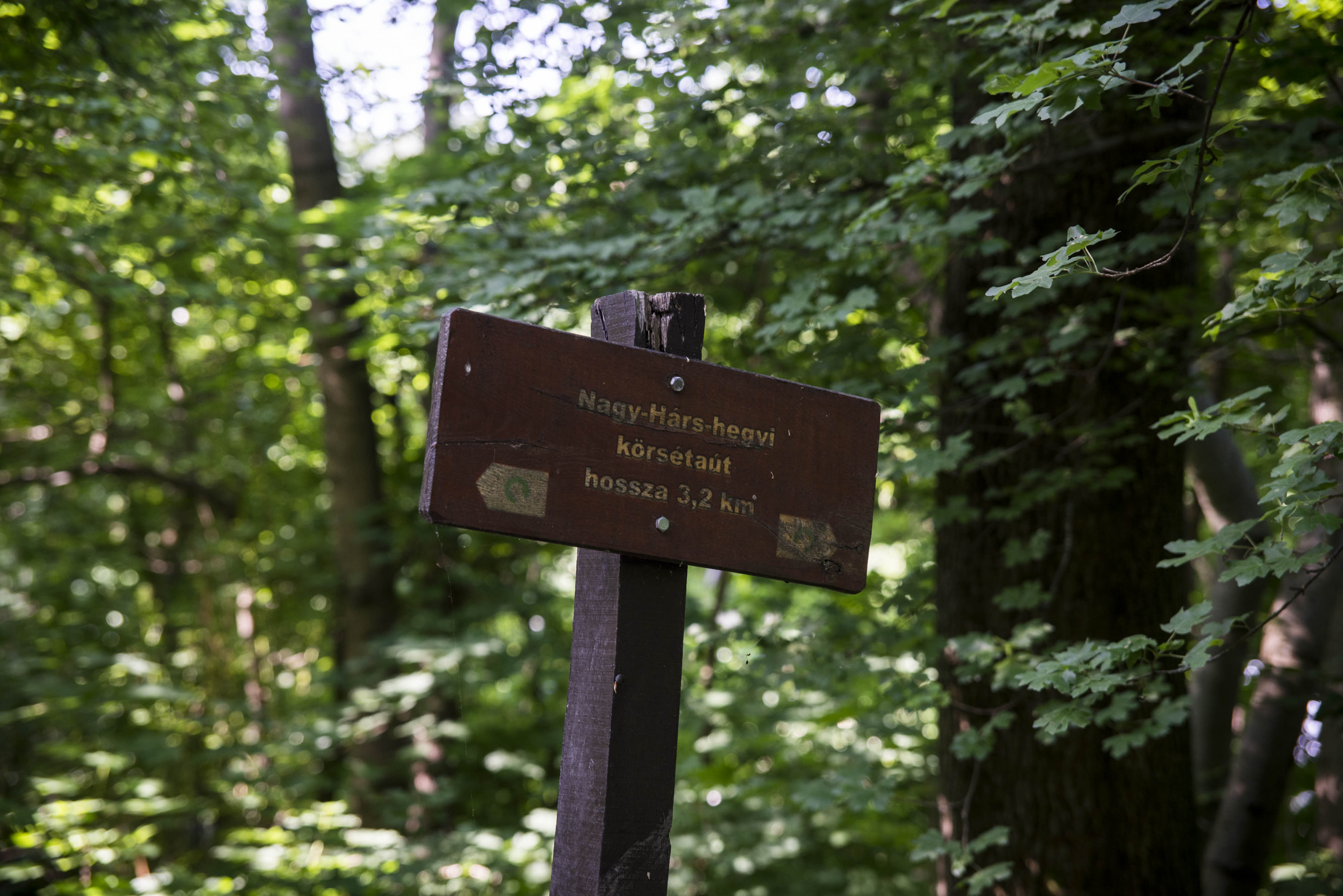Nagy-Hárs Hill is a favourite destination for excursions, easily accessible, with several types of trails, including cross-country and cardiac-friendly. The path to the lookout tower here is exciting, difficult and varied, and beneath it lies Bátori Cave, where Pauline monk László Bátori lived alone for 20 years in the mid-1400s in order to translate the Bible.

Above, the lookout tower is named after Károly Kaán who, as the sign on the base suggests, was an outstanding forest engineer. He was also a politician specialising in Economics and played a major role in establishing nature conservation in Hungary at the beginning of the 20th century.

Kaán was born in Nagykanizsa in
1867 and died in Budapest in 1940. You’ll find his grave at Farkasréti
cemetery. He studied at the Academy of Mining and Forestry in present-day Slovakia, becoming chief forester at Banská Bystrica.
He later worked at
the Forestry Department of the Ministry of Agriculture. He was also a
government commissioner for nature conservation, the national head of forest
administration, the government commissioner for forest and woodland affairs, a
corresponding member of the Hungarian Academy of Sciences, vice-president of
the National Forestry Association and later an honorary member.

We have Kaán to thank for the reorganisation of forest management in Hungary – he was a modern conservationist of his day and, in 1935, his work led to the enactment of the Forest and Nature Conservation Act. This outlined the range of protected plant and animal species, and restricted state expropriation of natural spaces. This was the first Hungarian law focused on nature conservation.

He also struggled to limit the expansion of logging companies and was behind the afforestation initiative of Hungary’s Great Plain in 1923, also necessary after the loss of territory following World War I. He made study tours in Europe and was involved in conservation activities in distant lands, including the United States.
Hungary's natural heritage
“Cultural development can only take
place in harmony with the work of nature, and therefore can only be healthy and
lastingly effective if human activity does not occupy the space within nature’s
ruins but within the framework of its creations. Human activity should not
forget to respect nature in securing the benefits of natural forces, not seek
to overpower the enduring capacity of the forces of nature and, within the
natural order, should appreciate, nurture and even develop in nature what is
forever beautiful and unsurpassable” – Károly
Kaán, Preserving Nature’s Heritage, 1909.

Kaán went on to point out: “It is shocking that we have little knowledge of our own natural heritage. Nothing has been listed or assigned for specific protection”. He then indicated the history and folk traditions of Hungary with particular reference, to nature, providing the historical name of each type of tree.
Hungary's historic trees
“Near Badacsony, by Rózsakő, is a
walnut tree under whose foliage Sándor Kisfaludy wrote some of his Himfy verses.
There is also a willow tree whose branch Sándor Petőfi cut off to use as a
stick in 1849 because of the rocky road ahead to Turda. Then there is the beech
tree in which Petőfi’s name was engraved in the forest of Czeméte…”

Instigated in 1984, the Károly Kaán Memorial Medal honours those who have excelled in forestry and nature conservation. A chalet on Szent-György Hill and a spring in the Visegrád hills were named after him, along with, of course, the lookout tower on Nagy-Hárs Hill. His statue stands under the arcades of the Ministry of Agriculture near Parliament on Kossuth tér.




